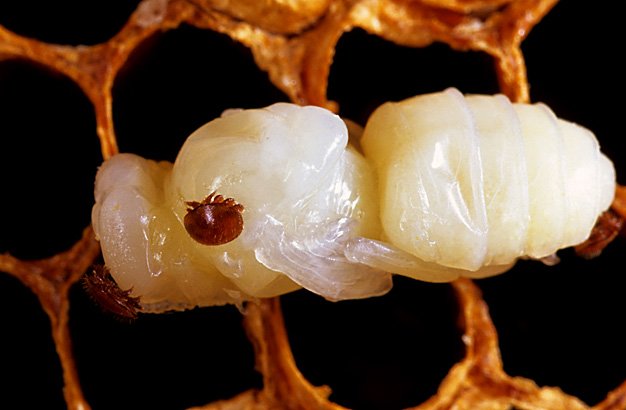
Parasitic Varroa mite has helped a virus wipe out billions of honeybees throughout the globe, say scientists.
A team studying honeybees in Hawaii found that the Varroa mite helped spread a particularly nasty strain of a disease called deformed wing virus.
The mites act as tiny incubators of one deadly form of the disease, and inject it directly into the bees’ blood.
This has led to “one of the most widely-distributed and contagious insect viruses on the planet”.
The findings are reported in the journal Science.

The team, led by Dr. Stephen Martin from the University of Sheffield, studied the honeybees in Hawaii, where Varroa was accidentally brought from California just five years ago.
Crucially some Hawaiian islands have honeybee colonies that are still Varroa-free.
This provided the team with a unique natural laboratory; they could compare recently-infected colonies with those free from the parasite, and paint a biological picture of exactly how Varroa affected the bees.
The team spent two years monitoring colonies – screening Varroa-infected and uninfected bees to see what viruses lived in their bodies.
Dr. Stephen Martin explained that most viruses were not normally harmful to the bees, but the mite “selected” one lethal strain of one specific virus.
“In an infected bee there can be more viral particles than there are people on the planet,” he explained.
“There’s a vast diversity of viral strains within a bee, and most of them are adapted to exist in their own little bit of the insect; they get on quite happily.”
But the mite, he explained, “shifts something”.
In Varroa-infected bees, over time, the vast majority of these innocuous virus strains disappear and the bees’ bodies are filled with one lethal strain of deformed wing virus.
And when it comes to viral infection, it’s the sheer quantity that kills; each viral particle invades a cell and takes over its internal machinery, turning the bee’s own body against itself.
Although it is not clear exactly why this strain thrives in mite-infected bees, Dr. Stepehn Martin explained that it could be the one virus best able to survive being repeatedly transmitted from the mites to the bees and back, as the mites feed on the bees’ blood.
The effect appears to take once the mites have changed this “viral landscape” in the bees’ bodies, the change is permanent.
“So the only way to control the virus is to control the levels of the mite,” said Dr. Stephen Martin.